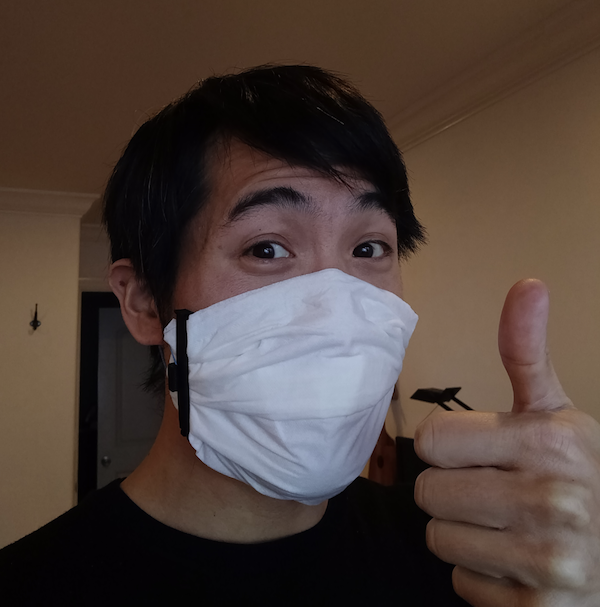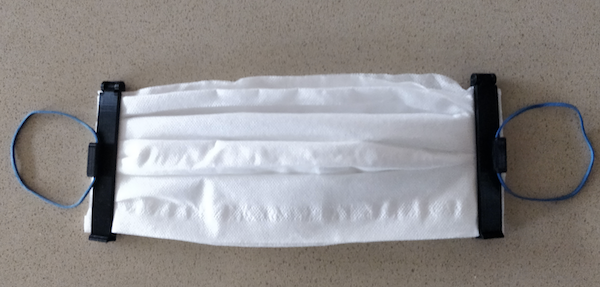In a Coronavirus pandemic world, working on guitar-related projects suddenly seems a bit… frivolous. Thanks to some cool 3d-printed life-saving solutions hitting the news during this time, my mind has shifted towards PPE (Personal protective equipment). Specifically, protective face masks which are difficult to come by these days.

Now before I get the lecture: no, these are no replacement for N95 masks, which are designed to filter airborne particles of down to .3 microns. I see this as more of a solution for people trying to navigate in public without infecting anyone else and lowering your chances of inhaling large droplets from other folks coughing or sneezing. Also, if you make your own masks, you don’t have to go out and buy them reducing stock that should probably go to medical professionals. Finally, it’s better than nothing.
Here’s are the CDCs thoughts on the matter:
– Unlike NIOSH-approved N95s, facemasks are loose-fitting and provide only barrier protection against droplets, including large respiratory particles. No fit testing or seal check is necessary with facemasks. Most facemasks do not effectively filter small particles from the air and do not prevent leakage around the edge of the mask when the user inhales.
Source: https://www.cdc.gov/coronavirus/2019-ncov/hcp/respirator-use-faq.html
– The role of facemasks is for patient source control, to prevent contamination of the surrounding area when a person coughs or sneezes. Patients with confirmed or suspected COVID-19 should wear a facemask until they are isolated in a hospital or at home. The patient does not need to wear a facemask while isolated.
There are many patterns for sewing cloth masks, and I made a couple of very embarrassing attempts at this. So shoddy were my attempts, that I started looking for a solution where I could make one much more quickly with household items. I thought why not tissue paper? This stuff is designed to be sneezed into. Plus it’s disposable.
Cotton is a decent filtration material. Again, we’re not going to get N95 levels of protection, but according to this study, cotton is a better than most other commonly available materials. Filtering with up to 69% efficiency. If you can manage to scrounge up some vacuum cleaner bags or disassemble furnace air filters, I’m quite sure those are even better and might even approach the protection of surgical masks..
For the clips, I modified a chip clip design, scaling it down a bit and including a little hook for a rubber band or hair band. The idea is you have two of these and a pair of stacked sheets of kleenex tissue. Fold 3 pleats in the tissues and clip them on both sides for a fresh mask.


If you want them to be symmetrical, you can mirror one on the x axis when slicing the model. Otherwise one side needs to be upside-down. But let’s be honest, nobody is winning any beauty contests with these.
Obviously not everyone has a 3D printer, in a pinch, a stapler does the job too. Just staple along the edge of the pleated tissue papers and staple a rubber band in the middle. Maybe this is a classic case of over-engineering… and I can’t seem to find my stapler right now.
Link to the Thingiverse file is here: https://www.thingiverse.com/thing:4246710